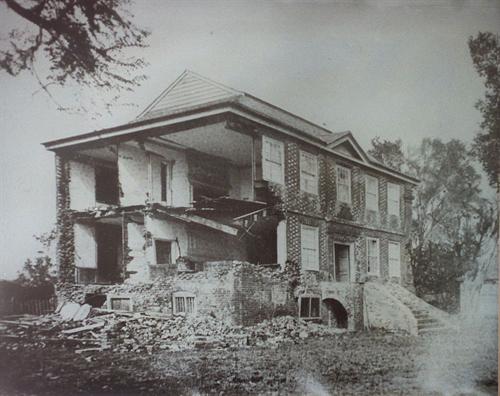Edward Tynte
Governor November 1709 – June 1710 The Lords Proprietors commissioned Edward Tynte governor of Carolina on December 9, 1708. The fractious colony was divided between Dissenters and Anglicans, Indian traders and their rivals, supporters of the proprietors and those who ignored their orders, and Tynte spent almost a year preparing for his new post. He arrived in Charleston on November 25, 1709, to replace Nathaniel Johnson in office. Tynte’s career in South Carolina was short – he died on June 26, 1710, and was succeeded by interim governor Robert Gibbes. “Tynte was the man who first from British shore Palladian arts to Carolina bore.” Lesser, Charles H. “Tynte, Edward.” Walter Edgar, ed.
Photos Provided Archdale Hall in St. Andrews Parish, built by 1710, attributed to Governor Edward Tynte. View after the earthquake of August 1886. |

